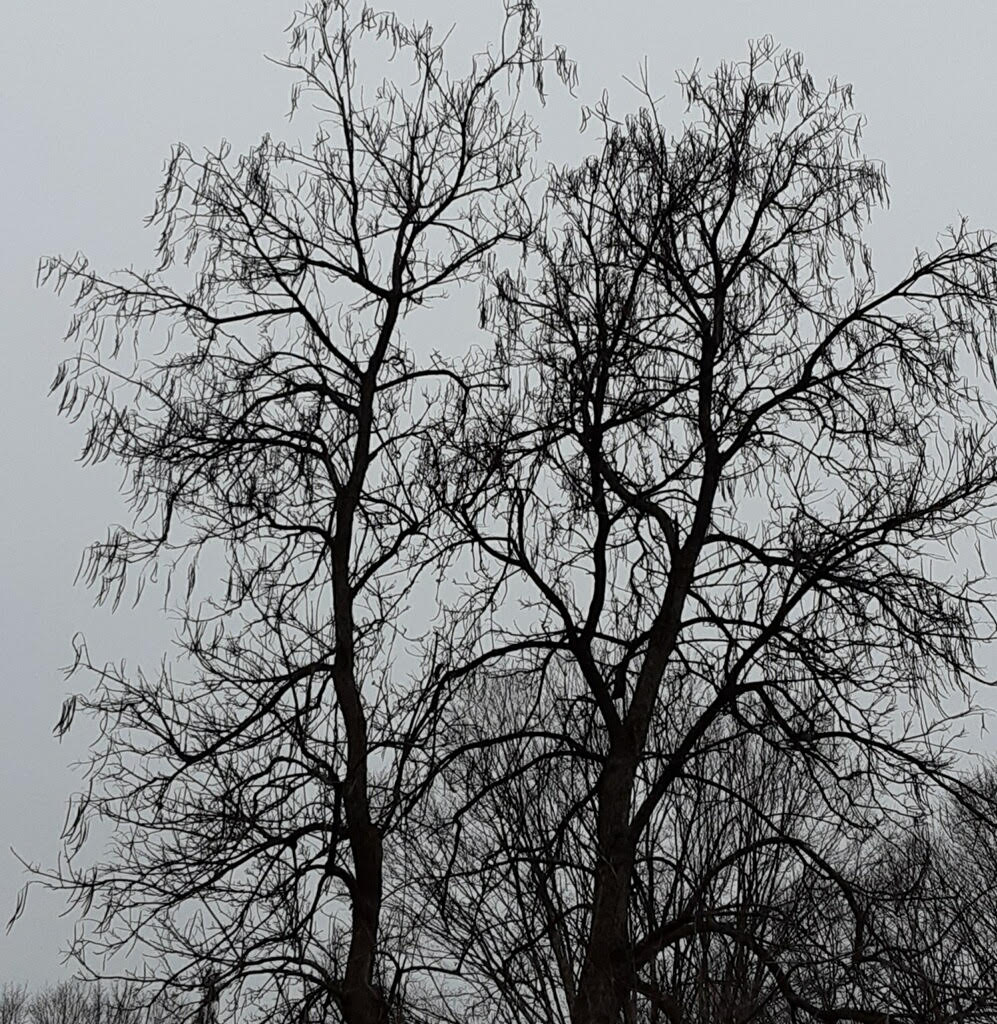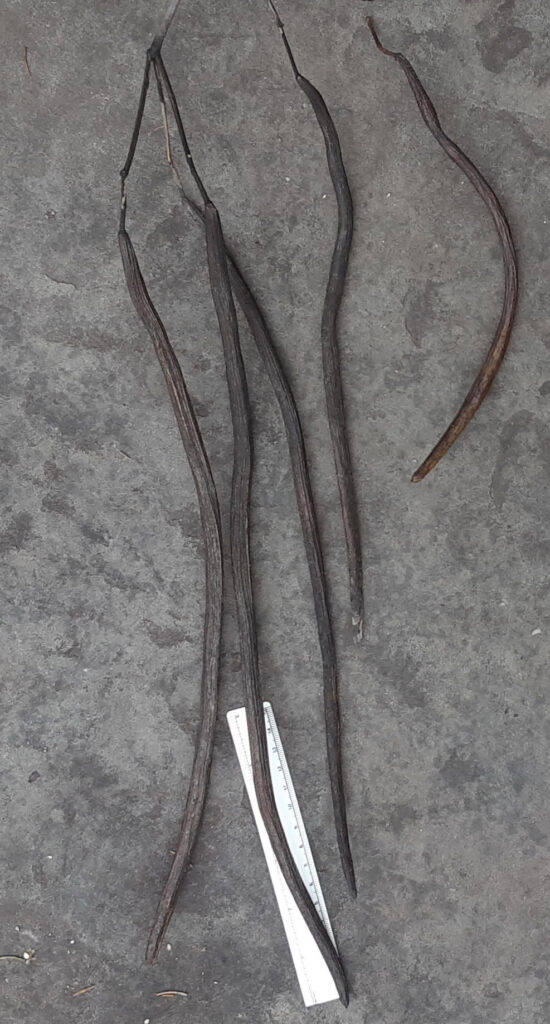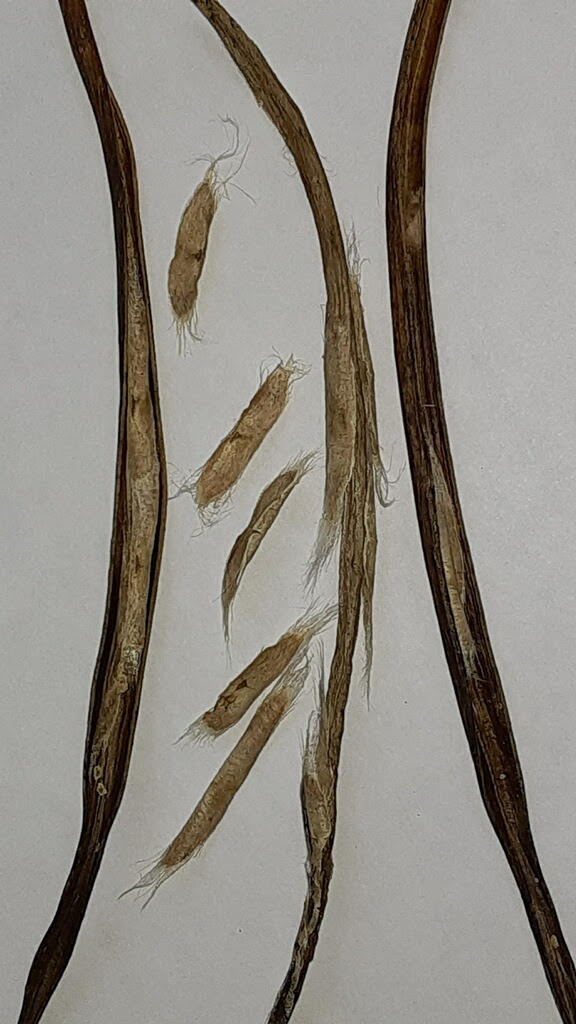By Susan Sprout
A “Cigar Tree” or Northern Catalpa (Catalpa speciosa) used to grow in a yard along my route to and from elementary school. We kids loved it and pretended “smoking” the long, bean-like seed pods if we were lucky enough to find some that had fallen to the ground. Kids! What can I say?
Now that the Catalpas have lost their large six to twelve inch leaves, you can easily look up and identify them by the “cigars” that have been left hanging there until springtime. Botanists use the name “silique” when referring to this type of dry fruit that splits in half between the two chambers where the seeds develop. The slender siliques range in length from ten to twenty inches. When pulled apart, the revealed seeds are flat with papery wings at each end and fringed with fine hairs – perfect for wind dispersal.

This particular species of Catalpa is the northernmost New World example of its tropical family – Bignoniaceae or Trumpet-creeper Family which has about 700 different flowering plants and trees in it that are mostly native to warmer places than Pennsylvania! Northern Catalpas can grow as tall as sixty feet with branches spanning from twenty to forty feet. The perfect shade tree for a large yard. Their dense foliage provides great shelter for birds when it rains. In late spring, large bunches of white trumpet-shaped flowers with purple spots and stripes inside entice hummingbirds and bees in to pollinate them.

Early settlers planted Catalpa for its straight-grained wood that was good for fence posts, RR ties, telephone poles, and furniture. It is a fast grower topping twenty feet in ten years and blooming in about three years. Its important medicinal uses back then were for bronchial problems and swellings. Pharmacological research today has shown that some tree parts have diuretic properties.

Both Catalpas, Northern and Southern species, are host trees of the Catalpa Sphinx Moth (Ceratomia catalpa) that lays eggs on the leaves. The caterpillars grow nice and fat feasting on the leaves…so juicy and plentiful that people, especially in the southern parts of their range, plant lots of Catalpas in order to have plenty of “Catalpa worms” to bait their hooks when fishing for Largemouth bass.

